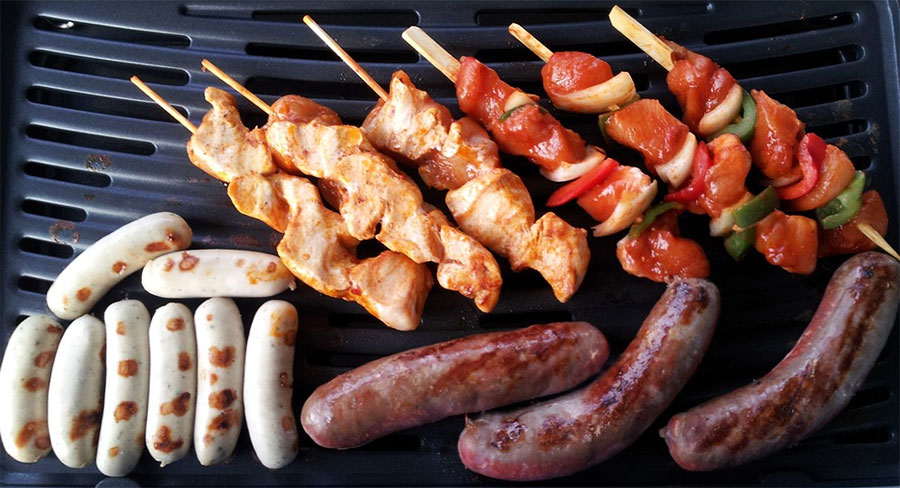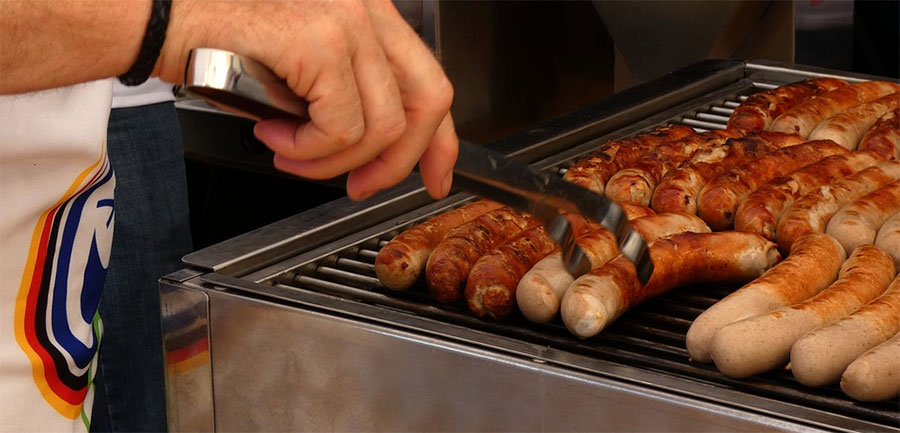How to Choose A Grill For Beginners – Options and Real Experience
When you go looking for a grill or barbeque for your home, it can get a little confusing. If you are new to grills, there is an entirely new set of terms and references that you may be unfamiliar with. In this article, we will go through some basic terminology. I’d also like to share my user’s experience with you to help you decide which grill is best for your circumstances.
Choosing a Grill Type
An essential decision to make is the type of fuel you prefer to use when cooking your food with an outdoor grill. There are a few main choices: charcoal, propane gas or natural gas, and woodfired smokers.
Charcoal is one of the most common types of fuel for an outdoor grill. These grills give a famous delicious smoky flavor to the food. Another plus is consistent heating up. Finally, charcoal grills win customers’ love due to their affordability and simplicity of use. However, the downsides also exist here. They take a while to heat up, and you need to source the charcoal, which can be time-consuming and heavy to cart. Besides, please be ready for the mess inevitable when you deal with charcoal.
Gas burners are also popular and require less maintenance than charcoal-based grills. They also heat up quickly and also offer various cooking methods (especially if they come with accessory cooking tools). But out of the box, gas models don’t offer the same “smoky” flavor of a charcoal or smoker grill. If you are after that flavor, you can always purchase a gas grill smoker, which is a small metal box filled with charcoal that sits on the grill rack and adds smoke to the air as it heats up. This option makes gas hard to beat.
A woodfired smoker is a slow-cooking grill that heats up using different types of wood. You can regulate the speed of the cooking using softwoods or hardwoods. But apart from that, it can be hard for beginners and those living in urban areas to adjust to the heat. So please be ready to spend some time getting used to your grill.
Sharing Experience

When it comes to me, I gave my preference to gas and charcoal grills many years ago. I have always been an avid barbecue smoker enthusiast. Now, many years later, my love became only stronger.
During my early grilling days (rightly or wrongly), I’ve been in the charcoal «club». I am not sure that it has anything to do with the desire to share the traditional approach to grilling but more to do with the fact that we all know that boys like to play with fire.
So when it came to buying my first smoker, I have to say that a charcoal smoker greatly drew my attraction, and in the end, my buying decision was to purchase a Big Green Egg. Yes, this was an expensive choice. And yes, I was caught by the marketing blurb, which incidentally is pretty much true, and since my purchase, I have been very happy. Happy from the chef’s point of view, but I was still a little restless about getting wider cooking opportunities and mastering new techniques.
Gas grills became that way out I was looking for. At first, I had to spend some time on installation and right assembling. As a rule, there are just a few items of furniture, such as cooking grates, that you need to install before you start the cookout. Well, that’s what I thought until I started to cook, and I found one fundamental difference in the way that a gas smoker worked compared to my charcoal model.
The ignition of my charcoal smoker would be successful with opening the bottom vents at the top draft to create an airflow. That would set the fuel on fire and so provide heat. Once I reach a temperature of about 300 Fahrenheit, I can prepare the smoker for my meat or fish in the smoke chamber, close the lid and concentrate on the upper and lower events. It didn’t take me long to work out that if the bottom vent was open by half an inch and the top was open by a quarter of an inch, then this will produce a constant temperature of 225 Fahrenheit, the perfect environment for long slow hot smoking. Without further attention, I can leave my smoker for a number of hours and relax in the knowledge that my settings were providing just enough air to the system to maintain a fire and the ideal temperature.
My barrel smoker, however, is fuelled by gas. The construction is quite simple, it’s not rocket science, but it works in a completely different way to a charcoal smoker.
Firstly, the heat is generated purely and simply from the burner, not radiating from the frying pan as I suspected it might be. So what I call the basic temperature control is made by varying the intensity of the burner, and the fine-tuning comes from the top vent. In the case of charcoal, opening the top vent increases the draft, which fuels the fire and so increases the temperature. Open the top further, and quite simply, the heat escapes, and so the temperature in the smoke chamber lowers.
Having mastered the technique, I was pleasantly surprised by how flexible and easy it is to maintain temperature control in my gas smoker. Certainly, it is going to be worthy of further experimentation, and hopefully, it will start me on the way to cold smoking too.
Conclusion

What I want to say in conclusion is that no one can decide for sure what you need. Yourself only and your experiments with different products and cooking methods may help you. However, I hope that my experience will explain some misty moments to you.
If you are still unsure which grill to go for, ask your local grill supplier which is best. Anyway, I’d recommend trying the gas model first. It is the easiest and cleanest option for urban or small areas and is easy to maintain.


